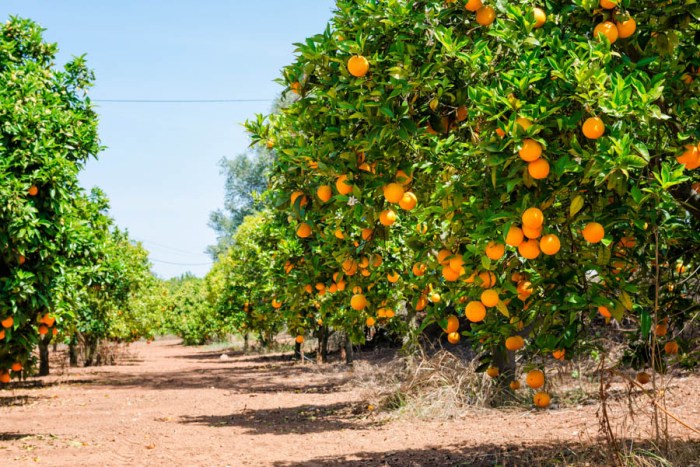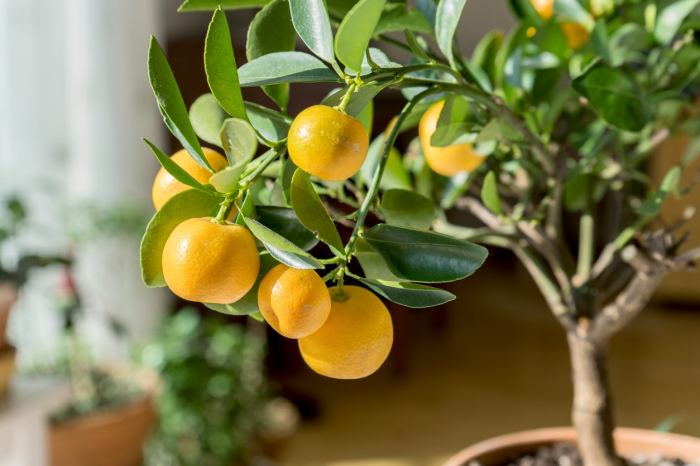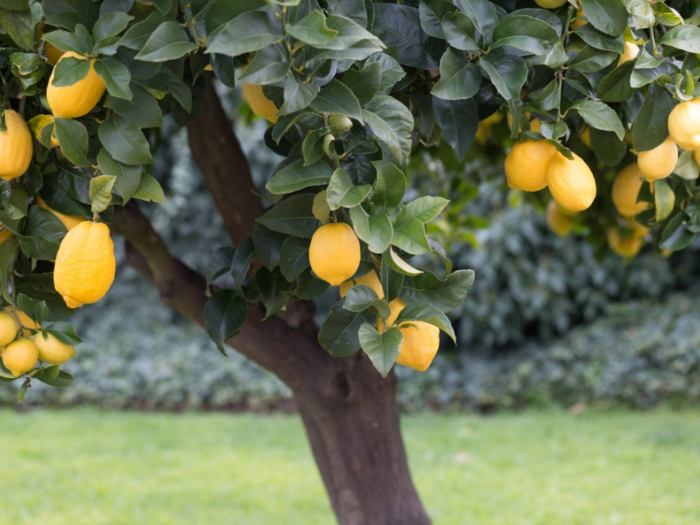How To Plant A Citrus Tree Your Guide To Success
Choosing the Right Citrus Tree

How to plant a citrus tree – Selecting the perfect citrus tree for your garden is a crucial first step to enjoying fresh, homegrown fruit. The success of your citrus endeavor hinges on choosing a variety that thrives in your specific climate and growing conditions. Careful consideration of several factors will ensure years of bountiful harvests.
Citrus Tree Varieties and Climates
Different citrus trees have varying degrees of cold hardiness. For example, Meyer lemons are known for their relatively good cold tolerance compared to many other citrus varieties, often surviving temperatures down to 20°F (-7°C) with some protection. Conversely, some types of mandarins are less cold-hardy and might require more substantial protection from frost. Tropical citrus like some limes prefer consistently warm temperatures and will not tolerate even mild freezes.
Knowing your local hardiness zone is essential before making a purchase. A hardiness zone map will show the average minimum winter temperatures in your region, guiding you towards varieties that can withstand the local climate.
Comparing Popular Citrus Varieties
Lemons, limes, oranges, and grapefruits are all popular choices, each offering unique characteristics. Lemons, like the Meyer lemon, are prized for their versatility in cooking and their relatively small size, making them suitable for smaller gardens. Limes, offering a distinct tart flavor, often require a warmer climate. Oranges, known for their sweet juice, come in various sizes and sweetness levels, with some varieties being more cold-hardy than others.
Grapefruits, with their large size and characteristically bittersweet taste, often require more space and are less cold-tolerant than some other citrus varieties. The best choice depends on personal preference and your local climate.
Factors to Consider When Selecting a Citrus Tree
Sunlight is a critical factor; most citrus trees require at least six hours of direct sunlight daily. Well-drained soil is also essential to prevent root rot. Consider the mature size of the tree, ensuring you have enough space in your garden. The hardiness zone of your location, as mentioned earlier, is paramount in determining which varieties will survive and thrive.
Planting a citrus tree begins with selecting a sunny spot and preparing well-draining soil. The process, while seemingly straightforward, shares similarities with planting other robust trees; for instance, understanding root systems is crucial, much like when you learn how to plant live oak trees. Proper soil preparation and adequate watering are key for both citrus and oak, ensuring healthy growth and abundant fruit in due time.
Finally, consider the tree’s fruit yield; some varieties are known for their prolific production, while others are more moderate.
Citrus Tree Variety Comparison
| Variety | Mature Size (approx.) | Fruit Yield | Cold Hardiness (approx. minimum temp) |
|---|---|---|---|
| Meyer Lemon | 8-10 ft | High | 20°F (-7°C) |
| Key Lime | 6-8 ft | Medium | 30°F (-1°C) |
| Valencia Orange | 15-20 ft | High | 28°F (-2°C) |
| Marsh Grapefruit | 15-20 ft | Medium-High | 28°F (-2°C) |
| Satsuma Mandarin | 8-12 ft | High | 15°F (-9°C) |
Preparing for Planting

Planting a citrus tree isn’t just about digging a hole and dropping it in; it’s about setting the stage for years of bountiful harvests. Proper preparation ensures your tree thrives, producing juicy fruit for years to come. This involves selecting the right location, and most importantly, preparing the soil to provide the ideal environment for root growth and nutrient uptake.Soil preparation is crucial for citrus tree success.
Citrus trees need well-draining soil rich in organic matter to flourish. Poor soil can lead to root rot, nutrient deficiencies, and stunted growth, ultimately impacting fruit production. Amending the soil before planting is an investment that pays off handsomely in the long run.
Soil Amendment for Optimal Growth
Improving poor soil involves several steps. First, you’ll need to loosen the soil to a depth of at least 2-3 feet. This allows for better root penetration and drainage. Next, incorporate ample organic matter, such as compost, well-rotted manure, or peat moss. A good rule of thumb is to mix in at least 2-3 cubic feet of organic material per cubic yard of soil.
This improves soil structure, water retention, and nutrient content. Finally, if the soil is particularly heavy clay, adding perlite or vermiculite can improve drainage significantly. This amended soil will provide a much more hospitable environment for your citrus tree’s roots.
Ideal Location Selection for Citrus Trees
Citrus trees are sun-worshippers. They require at least six to eight hours of direct sunlight daily to photosynthesize effectively and produce fruit. Choose a location in your yard that receives maximum sun exposure, ideally facing south or southwest in the northern hemisphere. Furthermore, consider wind protection. Strong winds can damage branches, desiccate leaves, and even uproot young trees.
Planting near a wall, fence, or other windbreak can significantly reduce wind damage.
Optimal Spacing in a Home Orchard
Proper spacing between citrus trees is vital to prevent overcrowding and competition for resources. Overcrowding can lead to smaller fruit, reduced yields, and increased susceptibility to diseases. The optimal spacing depends on the mature size of the tree, but a general guideline for home orchards is to allow at least 10-15 feet between trees.Imagine a simple grid pattern.
A diagram illustrating this would show four trees arranged at the corners of a square, each 12 feet apart. This ensures each tree has ample space for its root system to develop and its canopy to expand without interfering with its neighbors. This spacing allows for good air circulation, reducing the risk of fungal diseases and improving fruit quality.
Larger varieties might require even greater spacing.
Harvesting and Storing Citrus Fruit: How To Plant A Citrus Tree

Getting your hands on the juicy rewards of your citrus tree is super satisfying! Knowing when to pick your fruit and how to store it properly will ensure you enjoy the freshest, tastiest citrus for as long as possible. Let’s dive into the details of harvesting and storing your citrus bounty.
Citrus Ripeness Indicators, How to plant a citrus tree
Different citrus fruits exhibit various signs of ripeness. Oranges, for example, typically turn a deeper, richer color as they mature, often developing a slightly softer feel to the peel. Lemons and limes, however, may not change color dramatically but will become slightly more fragrant and feel heavier for their size. Grapefruit ripeness is often indicated by a slight softening of the peel and a more intense aroma.
Always check for a firm, but not rock-hard, feel. A good sniff test never hurts either! The best way to truly determine ripeness is often by tasting a sample fruit from your tree.
Harvesting Techniques for Minimal Damage
Gently harvesting your citrus is key to preventing damage and extending its shelf life. Use sharp pruning shears or clippers to cut the fruit from the branch, leaving a small stem attached. Avoid pulling or twisting the fruit, as this can bruise the peel and weaken the tree. Harvesting in the morning, after the dew has dried, is ideal as the fruit is less prone to damage.
Handle the fruit carefully, placing it gently into a container to prevent bruising during transport. Imagine you’re handling a precious jewel – that’s how delicate you need to be!
Storage Methods for Maintaining Freshness
Proper storage significantly impacts the longevity and quality of your harvested citrus. Store citrus fruits at room temperature for a few days to a week, ensuring they are kept in a cool, dry place away from direct sunlight. For longer storage, refrigeration is recommended. Place the fruits in a perforated plastic bag or container to allow for air circulation and prevent moisture buildup, which can lead to mold.
Properly stored, most citrus fruits can last for several weeks.
Creative Uses for Harvested Citrus
Beyond the simple pleasure of eating them, citrus fruits offer a wealth of culinary and household applications.
- Zest and Juice in Baking: Lemon and orange zest add amazing flavor to cakes, cookies, and muffins. The juice is perfect for adding moisture and zing.
- Citrus-Infused Oils: Infuse olive oil with citrus peels for a fragrant and flavorful addition to salads and dips.
- Homemade Citrus Cleaning Solutions: The acidity of citrus juice is a natural cleaning agent, perfect for cleaning cutting boards and removing stains.
- Candied Citrus Peels: Transform citrus peels into sweet and delightful candied treats.
- Citrus-Infused Water: Add slices of citrus to water for a refreshing and flavorful beverage.
FAQ Resource
What is the best time of year to plant a citrus tree?
The best time to plant is during the dormant season, typically fall or early spring, to allow the roots to establish before the hot summer months.
How often should I water a newly planted citrus tree?
Water deeply and regularly, especially during dry periods, ensuring the soil remains consistently moist but not waterlogged. Frequency will depend on your climate and soil type.
How do I protect my citrus tree from frost?
Protect young trees with frost cloths or by moving them to a sheltered location during freezing temperatures. Established trees are generally more cold-hardy.
What are some common signs of citrus tree diseases?
Look for yellowing leaves, wilting branches, or unusual spots or lesions on the fruit or leaves. Consult a local agricultural extension office for diagnosis and treatment.
